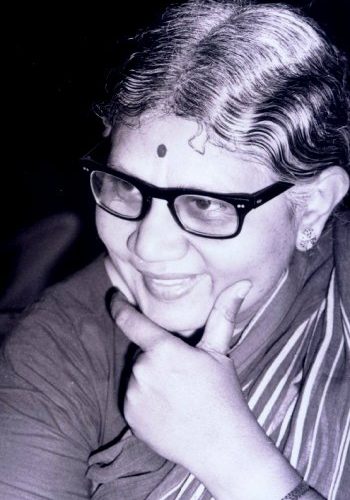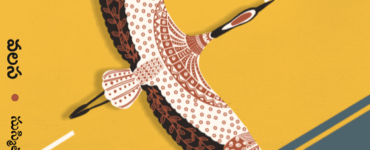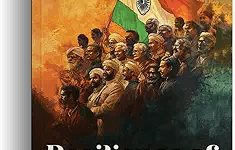Madhavi: A novel in Kannada By Anupama Niranjana; Telugu Translation by Kalyani; Published by Visalandhra Publishing House, Vijayawada; Price Rs.8-00 pages 190.
In the 20th century fiction writing there are a number of writers of Indian literature who have started extensively going back to our puranas and itihasas for subject matter. Many a time mythology and the stories related to it, have been deconstructed and writers, amongst them women mainly, have been focusing very proactively on gender issues, trying to create subtexts by weaving new narratives. These efforts are mainly due to the justifiable perception that in patriarchal societies like ours, starting with our rishis, literary writing of the purana literature, has not done justice to the portrayal of women in the narratives. As a trend that extended to the literature of the subsequent ages during prabhanda time in the middle ages and this continued till the second half of the 20th century. In addition to looking down on a section of society as untouchables or downtrodden in the caste hierarchies, women were discriminated against and were never given their due place in society. The patriarchal practices and beliefs we see in society today have their seeds in these writings or in the seeds sown by them. Most of modern India’s problems today are a result of these representations of women as property, as objects, or instruments of procreation.
Anupama Niranjana, born in Thirthahalli in1934 she was named Venkata Lakshmi. While by profession she was a doctor her passion was writing and she wrote a number of fiction and non-fiction books under the name of Anupama. She was married to another well-known writer K. Sivarao known by the name Niranjana (His Abhayadhamam was recently reviewed) A family of talented writers their daughters Tejaswini and Seemanthini too made their name in literary arena and academic fields in literary criticism) While most of her books were non-fiction, mostly health and medical care, her fiction writing was not prolific but the few novels she wrote earned her popularity and she is recognised as a leading author of modern fiction in Kannada.
Madhavi is one such novel, first published in Kannada in 1979. It was in keeping with the times as the feminist writing movement started picking up momentum in the 80s, though there were writers whose stand-alone voices were heard earlier. In more ways than one this novel was a path breaking one. The writer mentions in the introduction that this story might have taken place around 1300 BC and it occurs in Mahabharatha’s Udyoga Parva 114,117,118,119 and 120 adhyayas. Other characters like Viswamitra and Galava also occur in Adi, Sabha, Drona and Shanti parvas. Anupama’s extensive research as revealed in her writing and in her introduction is a torch that lightens our path to understand the novel- its time, its context and its place in present day India. She also says she used Iravati Karve and Sripada Amritha Dange’s writings as inspiration for this novel.
Yayati was a king who ruled three centuries before the great war of Mahabharatha, which was fought between the cousins of Kuru dynasty, Pandavas and Kauravas. Yayati in mythology was acclaimed as an exemplary king and was a close associate of the devas and their ruler Indra. He marries Devayani, the daughter of Asura guru Shukracharya. When Devayani becomes his queen he also inherits all her 1000 maids amongst them Sharmishta, the daughter of Daitya king Vrishaparva. Though a royal princess she had to serve Devayani as a maid for some liberties she took with the guru’s daughter while playing with her in the forest. Yayati, in addition to marrying Devayani also marries Sharmishta. He has two sons each Yadu and Drihyu by Devayani and Anu and Puru by Sharmishta (He marries her on her request as she wanted to become a mother). Shukracharya annoyed by his daughter’s unhappiness, curses him that he would lose his youth and virility. The king begs him to take back the curse but the Guru refuses, but grants redemption in exchange for one of his son’s youth. Yayati asks each of his four sons (by Devayani as well as Sharmishta). All of them refuse to oblige him except his youngest son Puru. He takes on his youth and rules till he gets tired satiated by life’s pleasures. He leaves his kingdom to Puru and retires to the forest in the end.
Madhavi was Yayati’s daughter by his earlier wife who died when the daughter was born. Our story begins here with this background of patriarchal norms being widely practiced across all strata of society, where even daughters of royal households were not exempt from discriminations and oppressions practiced in those days. Little is known about the daughters. Madhavi’s life as a royal princess and her life in the later part speaks volumes for the treatment that girls used to get in the family set up. If they become well-known it is due to their suffering and exploitation. The story opens with the life of Madhavi in the palace, how the only love she receives in her life was from her maids. Her father never showed any love as he held her responsible for her mother’s death. The king was planning her swayamvaram, a bride choosing her groom, when the story opens.
Galava, Viswamitra’s disciple finishes his training under the guru and expresses his desire to pay gurudakshina, an offering made to guru as a token of appreciation and gratefulness. Viswamitra refuses but on insistence decides to make it tough, to test his disciple’s loyalty. He asks that he would like to have 800 horses (in Mahabharatha, it was cows) with one eye and ear black and rest of the body white. Galavyas goes to obtain the horses as per his Guru’s desire. He was worried about the availability of the 800 horses with this specification. He goes to Yayati and requests him to give the 800 horses so that he can give his gurudakshina. But the king says he did not have 800 horses asks the rishi to take his daughter Madhavi instead and earn the horses. Galava agrees and thus start Madhavi’s troubles. She walks through the forests bare-footed as many days as Galava takes to reach a kingdom. He barters her for horses with three different kings, King Haryasva of Ikshvaku, who gives him 200 horses and Divodas of Kasi and Usinara together give 400. He was still short of 200 horses. So he takes Madhavi to Viswamitra and gives her to him asking him to keep her in lieu of the rest of the horses.

Here if we ask ourselves who was the beneficiary of Madhavi’s services? Neither their name nor their status matters- All of them without exception including the guru Rishi Viswamitra jump at the opportunity of living with her and having children by her because hers was royal blood. In every city she goes she leaves the child she begets and goes on the sojourn to the next destination. No one questions, no one was sensitive to her situation. What was she? An object? A commodity for bartering and trading? She never protested nor has she refused to oblige any one? She suffers silently when offering her body but seethes within. Finally, when she was taken back to her father, he feels pity maybe even a degree of guilt. He announces her swayamvara and tries to give her away properly in marriage. What was swayamvara? A choice the bride makes between the potential grooms her father invites. Most of the times we think it is the bride’s choice. But she gets to choose between the people her father invites and he invites only people of his caste and status and choice. In one grand act of courage, Madhavi rebels by refusing to choose anyone and walks out of her father’s court.
In the time the story is set in, women were not allowed to raise their voice against any ill treatment. But for the last act, Madhavi silently accepts her fate. She suffers the violation on her body by four different kings including a Rajarshi. In Mahabharatha, this story took place three generations before the Kuru Dynasty and the great war. But by the time the turn of women like Draupadi, Kunti, Amba and Satyavati came the situation changed. All of them were strong women. Draupadi the strongest as she protested the loudest, but in vain. But she did raise her voice and touched the conscience of everyone present. It gives us an understanding of the nature of the society during their time and we put it in the context but when we bring these texts into modern Indian contexts, when gender and caste are the subject we find that the narratives have not changed much at all. The universality of the text surprises us and we salute the women writing today who can touch our conscience with their interpretations of these texts and questioning voices.
The translation of this brilliant novel is so good that words will not do a reviewer justice. The choice of what to translate is very important for a translator and Kalyani Neelarambham has chosen wisely and executed her task brilliantly. It reads like an original novel. A retired teacher of English and an avid reader of classics in three different languages two of them Indian, Telugu and Kannada and of course English as she taught in AP govt degree colleges for more than three decades. Her range is wide and depth is immense and it works to her advantage while she navigates through these languages.
*









Thank you Syamala for a sharp analysis of the issues in ,behind and around the gender issues as seen by Anupama Niranjana .The worst part in the story of Madhavi for me was when so many princes and kings come for the Swayamgaa knowing that Madhavi has borne 4 children to four different men.
I am truly grateful to Visalandhra Publishers for the chance to translate this novel .It has given me immence satisfaction .Thanks Syamala once again for all the good things you said about me .,though I am not sure I deserve all the praise.
Well reviewed. Congratulations to the translator. Can we expect more such translations of texts from mythology from her? The silver lining is unlike the present prejudiced world, the king calls for swayam varam though that Madhavi walks out is a different matter that speaks of her evolution.
A detailed good review Syamala garu. The age old traditions of women is well brought over.